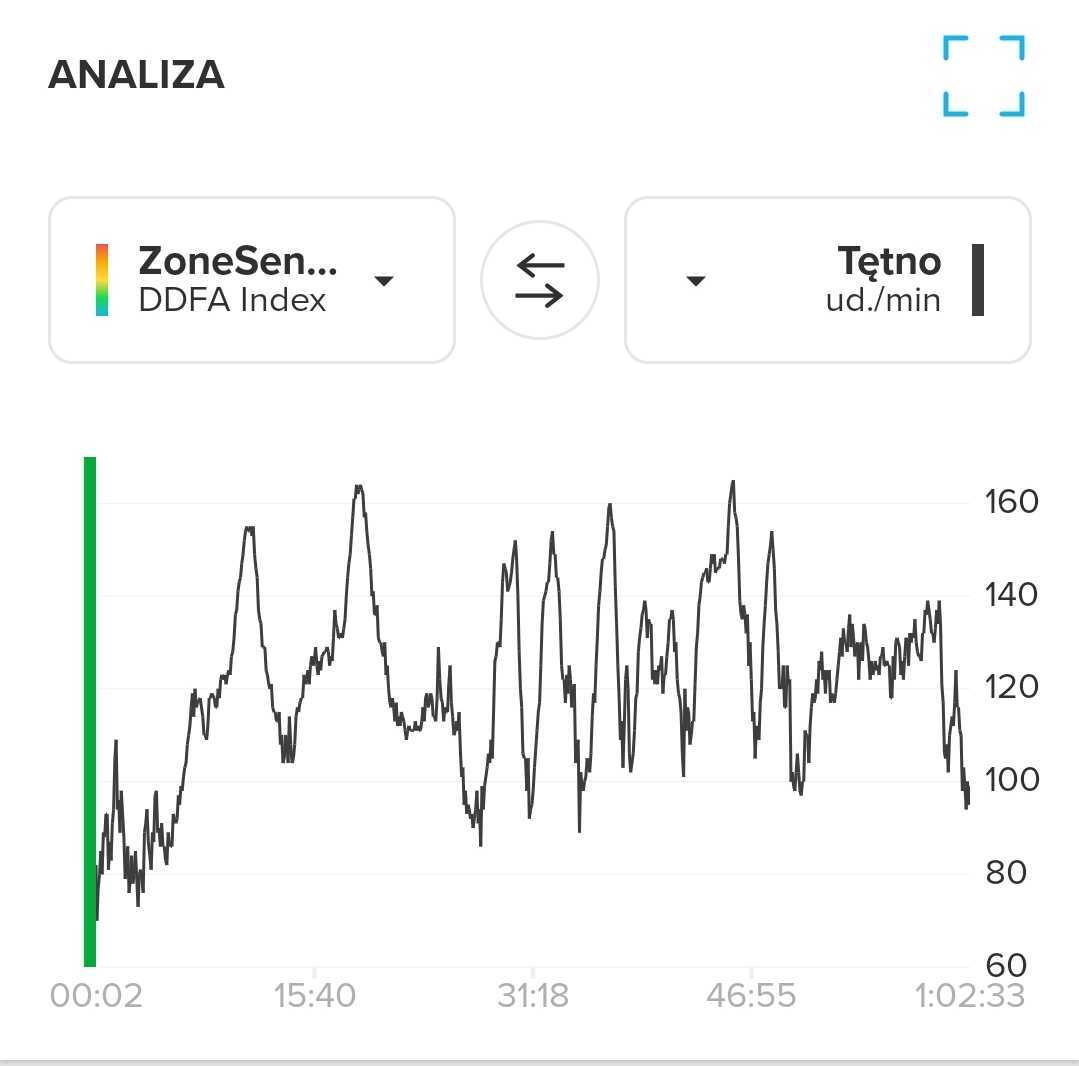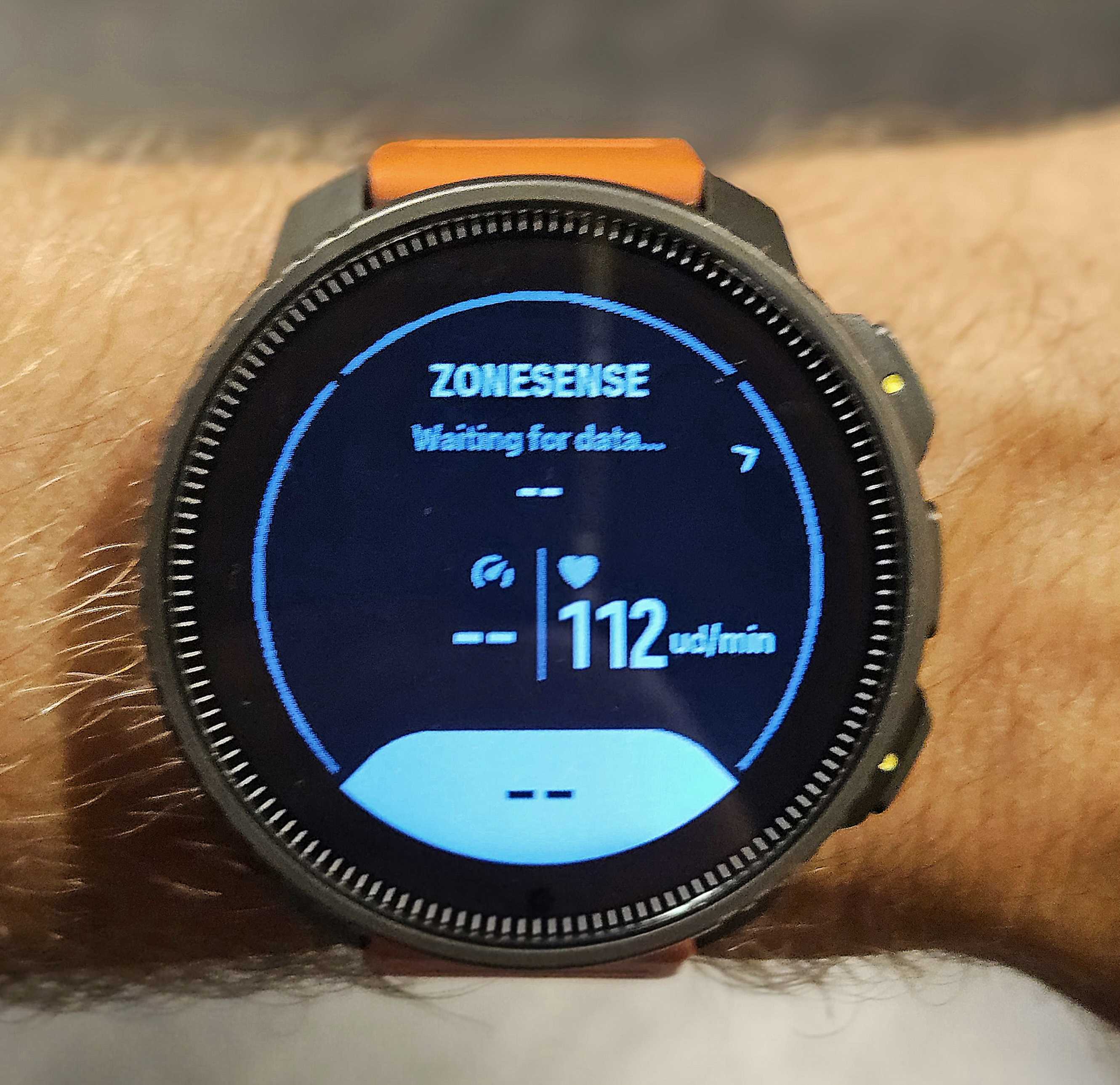Suunto ZoneSense
-
@cumbrian-runner said in Suunto ZoneSense:
either you trust me on this or you do not
Of course you know yourself best. Max HR is somewhat irrelevant anyway. Lactate (anaerobic) threshold is the more important figure, which should be set as the upper limit of your Zone 4. Judging from the few charts you’ve posted, it looks like your threshold is probably higher than you have it set. Maybe not 171 high, but something close to that would spread out your zones more evenly.
I have yet to adjust my zones based on ZS recommendations because I’m still trying to figure out which of my activities it is effective for. And, honestly, I’ll probably not use it much at all since I don’t like wearing an HR belt
 .
. -
@cumbrian-runner of course we trust you about your experience, but you should also trust the people here.
Max Heartrate is something a lot of people will seldom experience because its a extreme situation. You will only reach it with in very, very hard sessions no one normally is doing.
Thats why defining zones based on max HR is not advised, better is to do some of the tests to calculate your threshold heartrate -
I can confirm that ZoneSens is not working with Polar Verity Sense but… it is not working with Polar H9 chest strap!!![text alternatywny]


PS. Probably it is not RR problem - it works with H10 but not with h9:

-
@aslysz I have an H9 and it works just fine, so might be a different issue there.
-
@The_77 Thanks.
This is strange, because as you can see HR was still working, and ZoneSense was displaying the message “Waiting for data…”
-
@aslysz are you sure the HR data were coming from the H9 and not your watch?
The sensor pairing is a bit convoluted, your Suunto only knows a single sensor device of each type. If you had (like me) paired a POlar Verity Sense to your watch and switched to (I.e. paired to the watch) another external HR sensor (H10) to try out the new ZoneSense, your watch will show it is waiting to connect to an external sensor but it is not telling you which one.
The only way to be sure is to unpair and pair the sensor that you want before the run, but really be sure it is the only active sensor around.
Suunto really should allow naming of sensors to know WHICH heart rate metering device is the current one (it may not be the one you assume). I noticed a few times that although previously the wait screen indicated it had connection to all sensors in the sports profile, in my run suddenly the watch‘s HR metering was active and measuring …mostly my cadence. -

This is an image from today‘s race, a half marathon. I ran mostly by feel and know that aside from the first kilometer, where I lost almost precious minute because right after the start the race track narrowed so much that overtaking was impossible, the rest of the race was pretty good actually. I did not overpace and did not lose too much time trotting around aimlessly either, so overall pretty satisfied, PB and winning my age group for the first time

What I find interesting is the ZoneSense diagram. I now have a much clearer picture what a near maximal sustained effort should look like (I know what it feels like). Having this information on your watch in real time is more useful than it may appear at first blush. The pace I was aiming at was faster than my usual pace and I had just recovered from a nasty bronchitis, so I was not sure what a good value in terms of pace or power should be. The ZoneSense data reflect my „I feel good today“ feeling on the basis of which I decided to consider myself recovered.
The annoyingly slow first part, the mostly on target (based on the form of TODAY) effort throughout the race, only a few moments excursion into the red - I have to say, that is a very good match of how I would judge the race today and the results reflect that. Not knowing what I should aim for, I only looked at the ZoneSense data after the race but next time, I already know that ZS has gained its place on my watch on race day.Good job, Suunto.
-
@aslysz I’ve tried it four times with the s9pp and a polar h9 and it works. Only in customized sport modes I’ve recognised that you don’t see time spend in zones.
-
@marcrie I only use customized support modes and ZoneSense works with them. But if multiple S+ are selected, then the ZoneSense app may not work properly.
-
question which is not directly linked to Suunto ZoneSense:
does anyone know if using the heart rate belt and the Suunto+ Suunto ZoneSense application reduce the autonomy of the Suunto vertical significantly ?
(I want to use it for a long trail) -
@Antoine I don’t think it has any significant effect. Regarding belt vs. wrist based HR, I think the latter may need more power than the former. Whether the computation required by ZoneSense is significant, I don’t know, but I doubt it needs significant excess power.
-
@Antoine said in Suunto ZoneSense:
question which is not directly linked to Suunto ZoneSense:
does anyone know if using the heart rate belt and the Suunto+ Suunto ZoneSense application reduce the autonomy of the Suunto vertical significantly ?
(I want to use it for a long trail)No, in fact the belt should improve battery life but will not make much of a difference. The Solar version should go 90h so your long trail is indeed long:)
-
Alright, I get the frustrations with no ZoneSense data appearing on app. A recent personal example: I finally got to do a decent workout. I did it three parts - warmup, threshold workout, cooldown - because of shoe change. After syncing with the phone, to my dismay, only warmup appeared to have ZS data. But then I also noticed that the two other activities didn’t have “…” option on activity listing, i.e. I wasn’t able to edit them. I don’t know the ins and outs of Suunto’s cloud but I reckon it might be the case of those activities being queued up for analyzation. Lo and behold, some hours later the ZS did appear.
Just one experience, I know that obviously this isn’t the case for everyone

-
I couldn’t find the topic that’s why I’m asking
Do you notice a relatively long response time to changes in zonesens.
I will give an example of changes in pace and heart rate changes, the watch immediately reacts but ZONESENS takes more time to react to a change in the transition from aerobic to anaerobic or in the transition from anaerobic to vo2max -
@Danny-poleg
as far as i understand it (and i am far from being an expert) : zonesense zones are not HR zones.
Zonesense zones are computed from HR RR and, to my understanding, re like full body situation in regard to aerobic/anaerobic/vo2max factors
My understanding : when HR is reaching some HR anaerobic zone or VO2m zone or back, Zonesense will not switch to the same zone as well (it would have not sense), it is taking time to “accumulate” enough anaerobic/vo2m or other time to “discharge” as well. -
@Mff73
First of all, I’m not such a great physiologist, but I enjoy the product and ask to understand
When you perform an analysis of zonesens in the app, for example aerobic & anaerobic threshold appears.
And a certain pulse appears - for me, aerobic threshold is 125
When I pass the 125 heart rate shown on the watch I expect the watch to jump from green to yellow but it doesn’t happen right away sometimes the heart rate goes up a bit more until it changes
It is possible that it is slow to change is because every training session changes the range data??? -
@Danny-poleg
i am neither physiologic, and maybe i also totally misunderstand all this.
But,
it is said that zonesense is : not something for instant management not for quick/shot intervals.
Plus, it is said that zonesense is analyzing live RR data, thus from current workout, and thus trying to calculate current thresholds --> if you are not fit that day, tired, or not, etc… this context of current workout cannot be related to zonesense previous “indication”.
So, to my understanding : “you” should see globally now and in the future what zonesense is “suggesting” to you, and adapt (or not) your HRzone accordingly (if you still need/want to use those HRzones).And, again, i would like to be corrected by any experts, as it is just my own understanding of all this new thing.
-
@Mff73
The truth is, now that I’m reading what you wrote, it seems that you are indeed correct
What I will do now is write down the threshold data that appears in today’s training data and compare it to the next training I will do.
I, like you, would love to learn from the members here on the forum. -
@Mff73 I do not have first-hand insight into the actual algorithm used but ZoneSense much like other methods that try to make sense from a noisy input integrates over a certain timespan and thus requires some burn-in time and somewhat independently from it there is a response delay.
The figures at the moment are 10 minutes burn-in and a 3 minute time window mid-activity.The watch itself will discard the 10 minute burn-in data because it needs these to begin to find a pattern in the beat-to-beat interval data and again needs some time to adjust to major changes during the workout. It will not stop displaying data once it has tuned itself in but don’t expect strictly real-time responses. After three minutes or so at the new intensity the data will start making sense. Shorter intervals will trend in the correct direction (harder efforts will display higher ZS zones) but where you land precisely on that scale in absolute terms is computed more reliably on a minute and longer timescale.
-
@Christoph13 Thank you for this explanation. Where did you come across the 3-minute window? I’ve read through some of the documentation, but hadn’t seen this figure yet.
Anyways, it matches perfectly with what I have observed. I’ve been running short hill repeats recently of about 4-5 minutes each. I’ve noticed that ZS doesn’t start to spike until I’m almost at the top of the hill (3-4 minutes in). This now makes sense if it needs that 3 minute window to start throwing out the effects of the easier downhill and start building in the uphill effort.
I know ZS isn’t meant for these short intervals, but the simple idea that it’s calculating effort over a 3-minute window has made it easier to interpret the results I’ve seen.
I think Suunto is going to need to do a better job of explaining exactly what ZoneSense is and what it is not, how it works, and what users should expect from it. I know there’s documentation out there, but the average user isn’t gong to pour over any of that. I don’t know that I have any suggestions on how to do this. Simplifying such complexity is a challenge in itself.